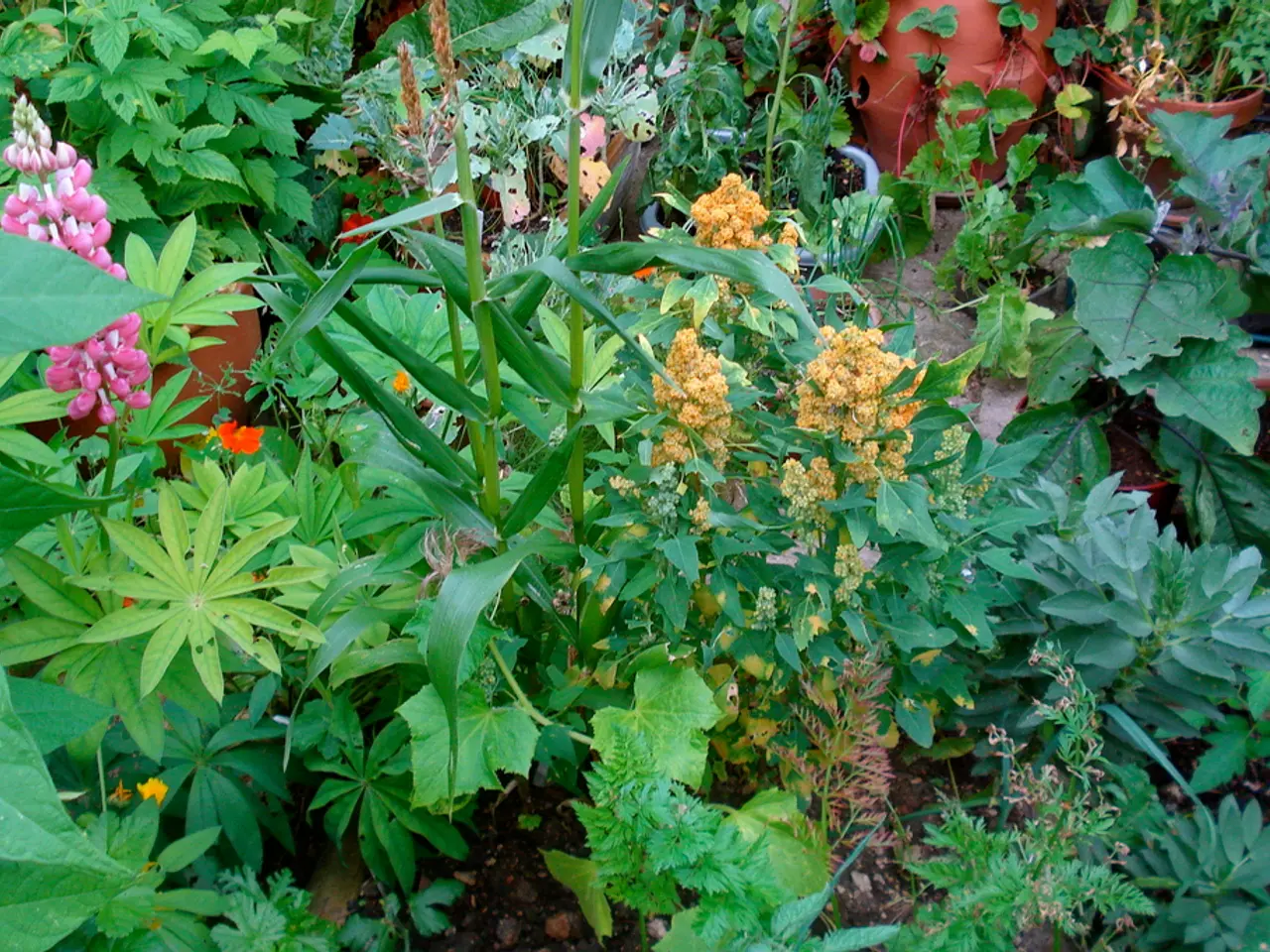Guidance on Harmonious Planting: Discovering Ideal Vegetation Combinations for Growing Near Each Other
In the quest for a thriving garden, gardeners can harness the power of nature by strategically pairing plants that naturally repel pests, attract beneficial insects, and enhance soil nutrients. This approach, known as companion planting, is a proven method for improving pest control, soil health, and overall garden productivity.
One such pairing is tomatoes and basil. Basil, with its strong aroma, repels pests like whiteflies, aphids, thrips, and tomato hornworms, which commonly damage tomatoes. This combination not only reduces pest damage but also improves tomato flavour and growth. Basil also helps deter mosquitoes around tomato plants, making it a versatile addition to your garden.
Marigolds, known for their vibrant colours, are another valuable companion. Interplanting marigolds with vegetables like tomatoes, peppers, and beans helps protect roots and improve soil health by lowering pest populations. Marigolds also attract beneficial insects, creating a natural pest barrier for tomatoes.
Chives, a common herb, can be a gardener's best friend. They deter aphids, which are common on lettuce, and their root systems don’t compete much, allowing lettuce to thrive. Chives also repel beetles and improve overall pest resistance nearby.
Legumes, such as beans, fix atmospheric nitrogen into the soil, enriching it for nutrient-demanding neighbours like tomatoes or corn. This reduces the need for synthetic fertilisers and supports better growth. Beans also provide some pest deterrence benefits indirectly by improving plant health.
Nasturtiums can act as trap crops, attracting aphids and caterpillars away from valuable crops, acting as natural pest bait. They add beauty to the garden and prevent pest damage on neighbouring vegetables.
Herbs like chives, garlic, rosemary, and sage can also provide pest deterrence benefits. Chives and garlic fend off aphids and beetles near carrots, beans, and brassicas. Rosemary and sage protect carrots, beans, and cabbage family plants. These aromatic herbs confuse or repel pests, enhancing pest control naturally.
Some companion plants, like lavender, borage, thyme, and wormwood, offer additional benefits. Lavender deters carrot flies and improves the garden environment by requiring little water and attracting beneficial insects. Borage acts as a living mulch for strawberries, helping to retain soil moisture and suppress weed growth. Thyme deters pests, attracts beneficial insects, and benefits from rose shade and moisture retention. Wormwood repels pests that attack beans and fixes nitrogen in the soil, benefiting neighbouring plants.
Carrots and leeks, for instance, reduce the need for chemical pesticides and promote healthier growth through natural pest control and efficient use of space. Brassicas benefit from mint, leading to healthier and pest-free growth. This practice can also lead to better use of sunlight and water.
Companion planting is not just about pest control; it's about creating a more resilient ecosystem. Plants with deep roots, like lavender and borage, help aerate the soil, enhancing its overall fertility. Dense foliage of companion plants shades soil, suppressing weeds and retaining moisture. Some plants, like mint and borage, can improve soil health by covering the soil, reducing weed growth and helping to retain soil moisture.
In conclusion, companion planting is a powerful tool for gardeners seeking to reduce chemical pesticide use, promote healthy soil biology, and increase overall garden productivity naturally. By strategically pairing plants that naturally repel pests, attract beneficial insects, and enhance soil nutrients, gardeners can create a thriving, sustainable garden ecosystem.
By complementing tomatoes with basil, gardeners can enhance the taste and health of tomatoes while reducing pest damage, thanks to basil's strong aroma deterring common tomato pests.
Interplanting marigolds with home-garden favorites like tomatoes, peppers, and beans offers additional benefits, such as improved soil health, lower pest populations, and the attraction of beneficial insects. This home-and-garden strategy is a great way to build a thriving, self-sustaining garden lifestyle.




